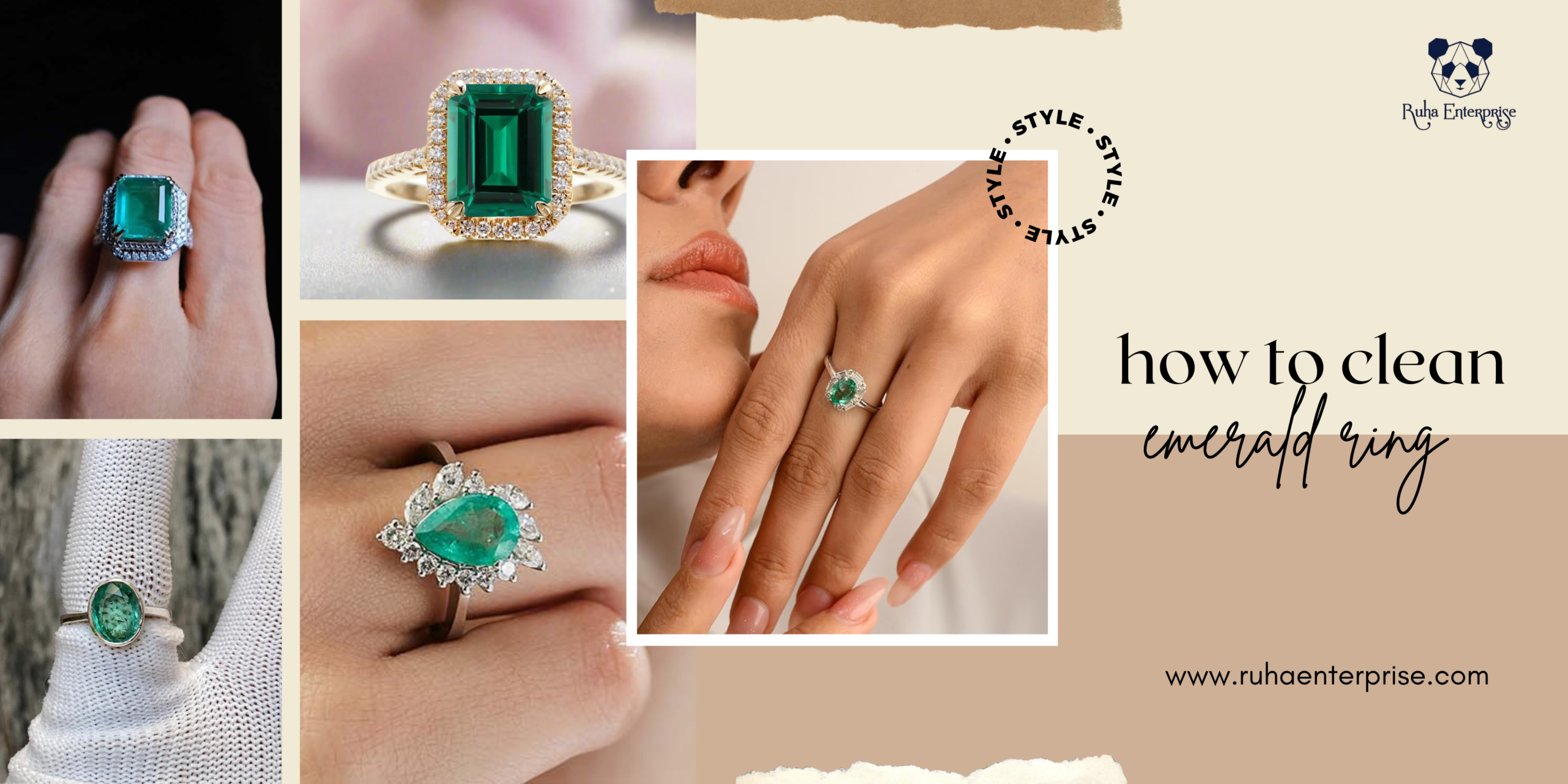How to Clean Emerald Ring the Right Way
Emerald rings, with their deep green hue and timeless elegance, are a stunning addition to any jewelry collection. Whether you’ve recently purchased an emerald cut engagement ring or received a vintage emerald ring as a gift, keeping it clean and well-maintained is essential to preserving its beauty and durability. Emeralds, being one of the softer gemstones compared to diamonds, require special care to ensure they remain as radiant as the day you got them. This guide will walk you through safe and effective ways to clean your emerald engagement ring and provide tips for maintaining its sparkle. You’ll also learn what cleaning methods to avoid to protect your cherished gemstone. Why Emerald Rings Require Special Care Emeralds, a variety of the mineral beryl, are known for their captivating green color. However, their unique composition makes them more delicate than other gemstones like diamonds or sapphires. Here’s why emeralds need a little extra TLC: Taking steps to clean and maintain your emerald cut engagement ring or emerald engagement rings correctly will ensure they keep sparkling for years to come. Cleaning Your Emerald Ring at Home The good news is that cleaning your emerald ring at home is simple and cost-effective when done right. Here’s a step-by-step guide: Step 1. Gather your Supplies Before you start, make sure you have the following items: Step 2. Prepare a Gentle Cleaning Solution Add a few drops of mild dish soap to a small bowl of lukewarm water. Avoid using hot or boiling water, as extreme temperatures can harm the emerald or its setting. Step 3. Clean the Emerald Gently Submerge your emerald engagement ring in the cleaning solution for about 5 minutes. Using the soft-bristle toothbrush or cloth, scrub gently around the stone and the setting. Pay special attention to crevices where dirt and grime tend to accumulate. Step 4. Rinse Thoroughly Once you’ve cleaned the ring, rinse it thoroughly under lukewarm running water to remove any soap residue. Be sure to do this over a sink with a plugged drain or a bowl to prevent any accidents. Step 5. Dry with Care Pat your emerald ring dry with a microfiber cloth. Avoid paper towels, as they can leave behind fibers or scratches. By following these steps, your emerald cut engagement ring will look as brilliant as the day it was first worn! Professional Cleaning for Emerald Rings While at-home cleaning is effective, taking your emerald ring to a professional jeweler for occasional deep cleaning is a good idea. Professionals use ultrasonic cleaners or steam cleaners with caution, ensuring no damage to your gemstone. They can also check your ring for loose settings or wear and tear, keeping it in optimal condition. It’s especially recommended to visit a jeweler if your emerald has lost its luster, as this might indicate that its oil treatment needs replenishment. What Not to Do When Cleaning an Emerald Ring Emeralds are delicate, so knowing what to avoid is just as important as knowing how to clean them. Here are a few no-no’s: Never use bleach, ammonia, or harsh household cleaners on your emerald engagement rings. These can strip the oils used to treat the gemstone and may damage the ring’s metal settings. Although some jewelers use ultrasonic cleaners, these machines can cause damage when used carelessly. They may loosen the stone or harm its natural inclusions. Avoid abrasive materials like stiff brushes or scouring pads, which can scratch the gemstone or metal setting. Emeralds can absorb moisture, which may weaken their treatments over time. Do not soak them for extended periods. Emeralds are sensitive to sudden changes in temperature. Avoid cleaning them with hot water or exposing them to extreme heat or cold. Tips for Maintaining Your Emerald Ring Keeping your emerald cut engagement ring in stunning condition involves more than regular cleaning. Here are some maintenance tips to consider: 1. Remove Your Ring During High-Impact Activities Whether you’re working out, gardening, or cleaning, it’s best to remove your emerald ring to avoid scratches or impact damage. 2. Avoid Lotions and Perfumes Lotions, oils, and perfumes can create a film on the emerald, dulling its brilliance. Put your ring on after applying these products. 3. Store Properly Store your emerald engagement rings in a soft, padded jewelry box or a fabric-lined compartment to avoid scratches. 4. Regular Inspections Have a jeweler inspect your ring once a year to check for loose prongs or settings and ensure the gemstone remains secure. Why Emerald Rings Are Worth the Care Despite requiring a bit more care, emeralds are undeniably worth it. From their rich green tones to their timeless elegance, an emerald ring is a piece you’ll cherish forever. Plus, the right care routine ensures it becomes a legacy piece you can pass down through generations. For those in search of their perfect match, emerald cut engagement rings and other emerald engagement rings offer a unique, vintage-inspired allure. Whether it’s the rectangular elegance of an emerald cut or the classic sparkle of a round cut, these rings make a sophisticated statement of love and commitment. Wrapping Up Cleaning and maintaining your emerald ring doesn’t have to be complicated. With a little care and attention, you can keep your emerald cut engagement ring or emerald engagement rings looking as radiant as the day you first wore them. Remember to clean your ring regularly, avoid harsh chemicals, and store it safely to protect both its beauty and value. For exquisite pieces or advice on caring for your jewelry, consult a trusted jeweler who specializes in emeralds. And if you’re someone looking for your perfect emerald ring, explore stunning options in emerald-cut engagement rings that are as timeless as they are breathtaking. Read: Gold Wedding Bands Ultimate Guide and Trends in 2025









